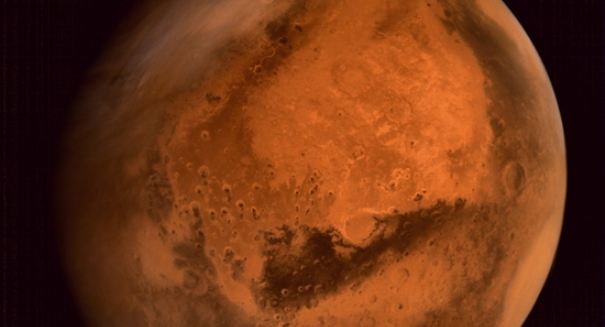
India's Mars satellite successfully transmitted a beautiful image of the Red Planet back to Earth that showed an Indian-shaped dust cloud.
Launched a week ago with great fanfare, India’s Mars Orbiter Mission- or MOM for short- has transmitted a beautiful image of the Red Planet back to Earth. It’s a stunning high-definition portrait that also includes an outline of a dust cloud that strongly resembles India.
The picture, taken 46,000 miles up by the Mars Color Camera, shows the Red Planet in gorgeous detail. But what really captivated the Indian public’s attention was an India-shaped dust cloud on the center left of the map.
The outline is due to the contrast of dark and light tones of the red soil. It’s located in the Meridiani Planum region, where NASA’s Opportunity craft is still exploring.
The Mars Orbiter Mission will orbit the Red Planet for six months, gathering information about the composition of the atmosphere. This will hopefully help scientists determine how and why the planet lost its water.
Hailed as a triumphant success for India, the mission was produced for just $75 million- less money than the Sandra Bullock movie Gravity. India used homegrown technology and local scientists to construct and launch the spacecraft.
While many have criticized the mission as wasting money that could have helped India’s 1.2 billion people, a majority of whom live in poverty, MOM has provided the country with a major source of pride. While many other nations failed to reach Mars on the first try- such as Japan and Russia- India succeeded last week.
The Financial Times of London recently commented that the Mars mission benefited India through “nation-building” by giving the developing country a tremendous source of pride. Other press responses have been similar, praising India’s thrift, dedication, and determination in building a nimble low-cost craft that will help gather research in the Martian atmosphere.
India’s research will also help the current American mission and future European Space Agency mission in studying the planet’s geology.
I am glad to be one of several visitants on this great site
(:, thank you for posting.